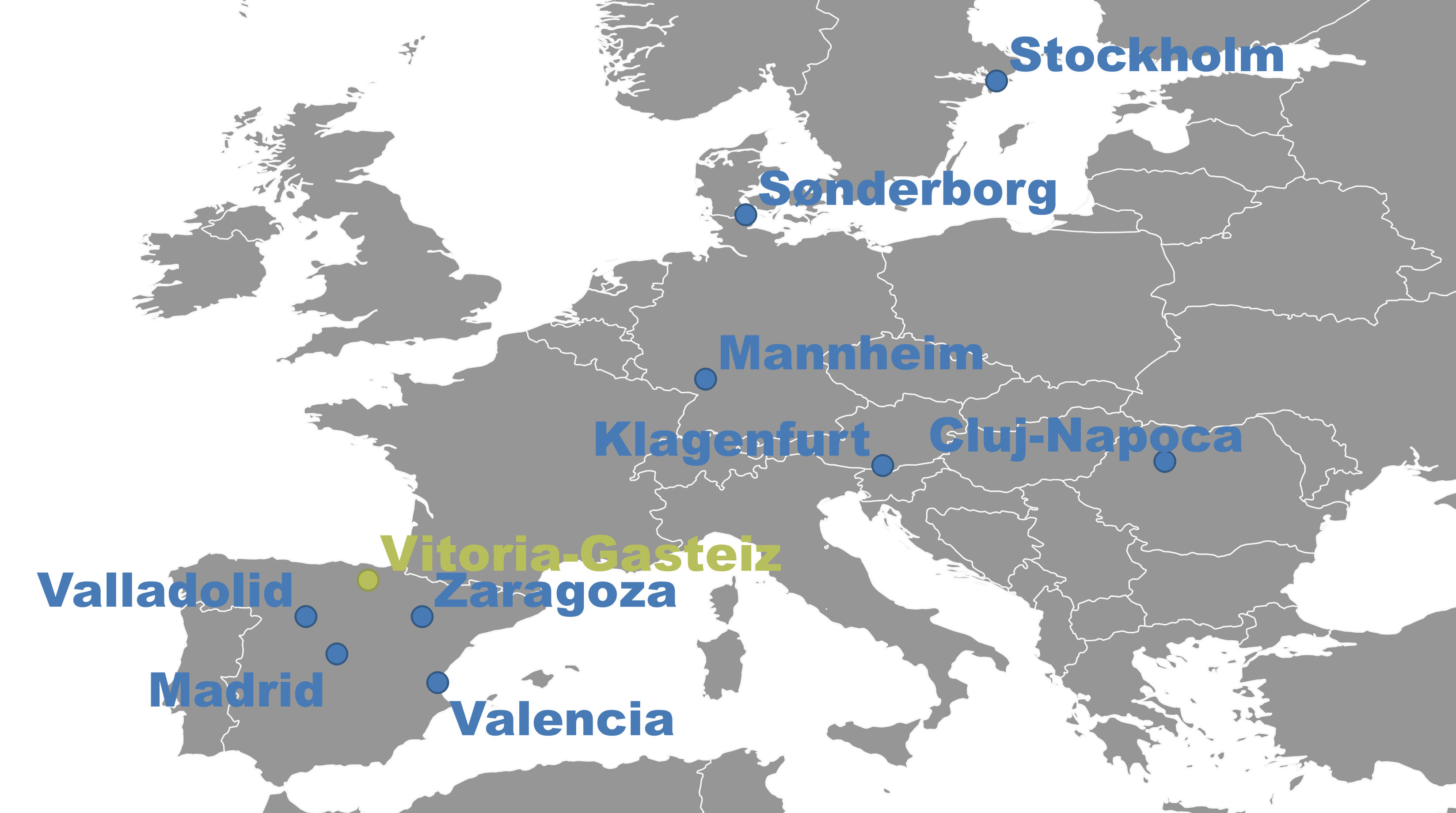Home
The Vision
CLMS-Cities supports the transformation to climate neutrality and energy efficiency in cities, contributing to Global Stocktakes, by monitoring the implementation of different CO2 reduction technologies in buildings and transport, as well as the implementation of spatial planning interventions targeting climate change mitigation. As its final products are based on the Copernicus offer, CLMS-Cities contributes to European strategic autonomy in developing global space-based infrastructures, services applications and data, fostering the EU's space sector competitiveness in Earth Observation. The foreseen CLMS evolution will increase CLMS-Cities potential to support urban planners and decision makers to deliver and implement more effective integrated planning strategies promoting climate change mitigation and adaptation.
The CLMS-Cities model
Enhancing our understanding of CO2 emission patterns at the local scale, the CLMS-Cities project develops an advanced, scalable CO2 emissions model. Within a CLMS evolution framework, the project is deriving a set of data products by fusing existing CLMS products with relevant Copernicus services and satellites products and third party data, to fulfil the highly demanding parameterization of the urban CO2 emissions modelling in terms of efficiency, reliability, accuracy and spatial/temporal detail.
Specific Objectives
- To improve urban CO2 modelling at local scale to generate a unified modelling framework (the CLMS-Cities CO2 emission model) and evaluate its outcomes against flux tower CO2 observations.
- To contribute to CLMS evolution by a proof-of-concept demonstration of the constructive utilization of CLMS in urban CO2 monitoring, by developing a new modular and scalable product chain, offering new dimensions and new interests for Copernicus Land products.
- To demonstrate the technical and operational feasibility of enhanced CLMS, to provide the Mission’s community with spatially disaggregated environmental intelligence and benchmark data for evaluating GHG inventories in Mission’s cities.
- To demonstrate the feasibility of CLMS-Cities to replicate its method to all Mission Label Cities, delivering consistent products across the Mission and strengthening the readiness for an operational deployment by developing a strategy for integrating these products in a standard way in CLMS.
- To build capacity and awareness-raising concerning the new CLMS products through organization of effective communication/dissemination to enhance the use of CLMS across cities and human settlements.
Cities' Engagement
CLMS-Cities will build on CLMS evolution for the EU Cities Mission, delivering urban CO2 emission information, reflecting user needs. The cities' needs are evaluated through continuous dialog and co-creation opportunities within workshops. The European Environment Agency (EEA) advises and consults throughout the whole process of the CLMS-Cities method development. The active co-creation process not only involves stakeholders from the EU Cities Mission, but includes downstream applications developers (e.g., Climate KIC) and the scientific community (e.g., ICOS, EuroGEO) enabling an effective and dynamic knowledge exchange to ensure that demands and needs are fully addressed.
Why CLMS-Cities
Cities play a highly significant role in climate change, primarily as concentrated areas of fossil fuel-based energy use that are responsible for a large fraction of anthropogenic carbon dioxide (CO2) emissions. The European Union (EU) Cities Mission supports 100 European cities in becoming climate-neutral and sustainable by 2030. Achieving climate neutrality in EU Cities Mission requires a city to reduce the GHG emissions from all sectors within its boundary to net-zero by 2030, including emissions from combustion of fossil fuels in buildings and facilities. By far the most important Green House Gas (GHG) emitted from cities is CO2.
CLMS-Cities holds promise in aiding cities to achieve the ambitious goals of the EU Cities Mission, by assisting in monitoring the efficiency of efforts towards climate neutrality. CLMS-Cities builds on the Copernicus Land Monitoring Service (CLMS) with new elements and products, capable of being integrated into land planning decisions with regards to climate change mitigation and adaptation at local scale, providing the EU Cities Mission with spatially disaggregated environmental intelligence on CO2 emissions to to support the EU Cities Mission objectives.
The Study Sites
CLMS-Cities selected as case studies the ten cities that have received the EU Mission Label in 2023: Vitoria-Gasteiz and Zaragoza (Spain), Sønderborg (Denmark), Mannheim (Germany), Madrid, Valencia, Valladolid, Klagenfurt (Austria), Cluj-Napoca (Romania) and Stockholm (Sweden). The CLMS-Cities CO2 emission model will be developed for Vitoria-Gasteiz exploiting a full year of Flux Tower observations.

